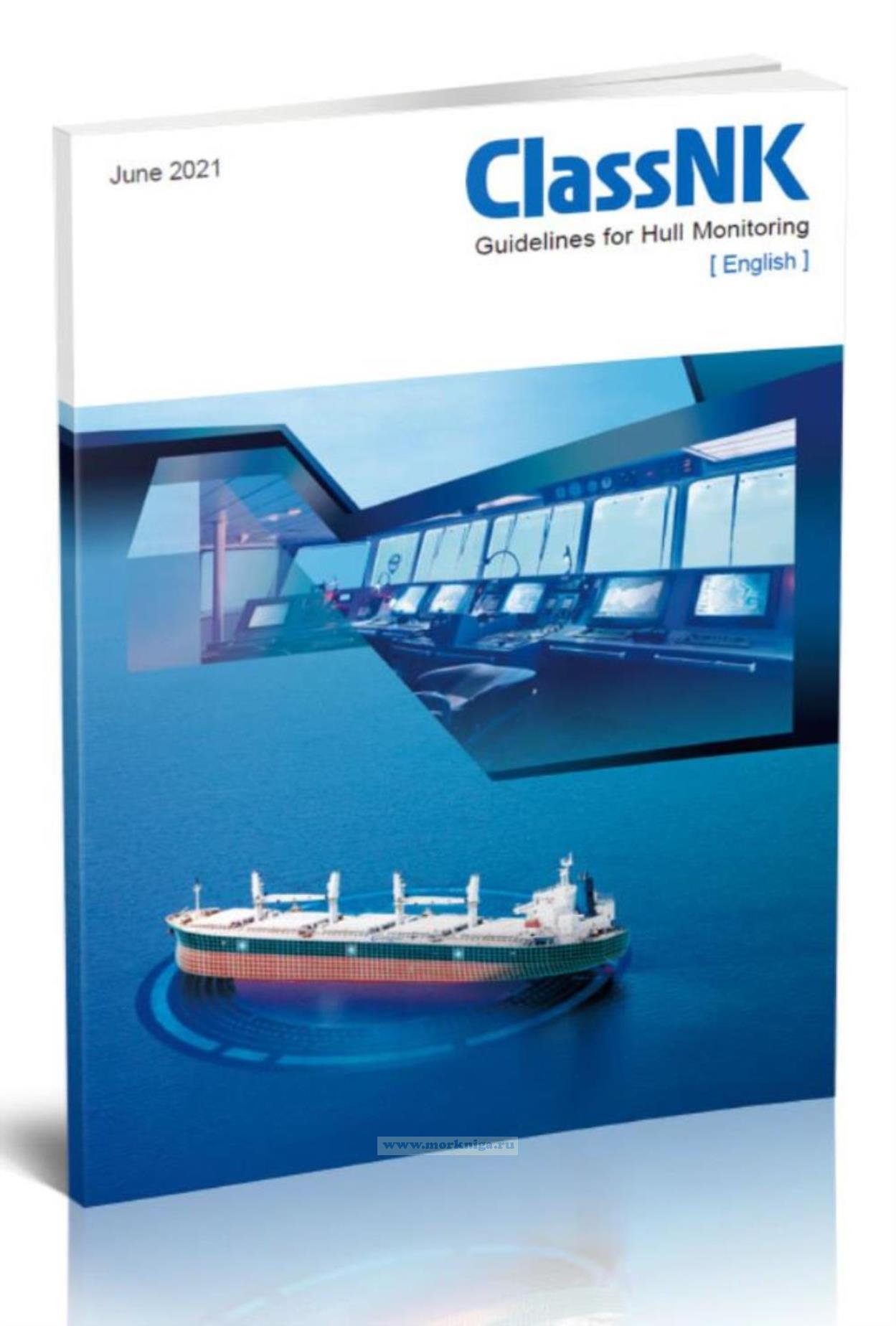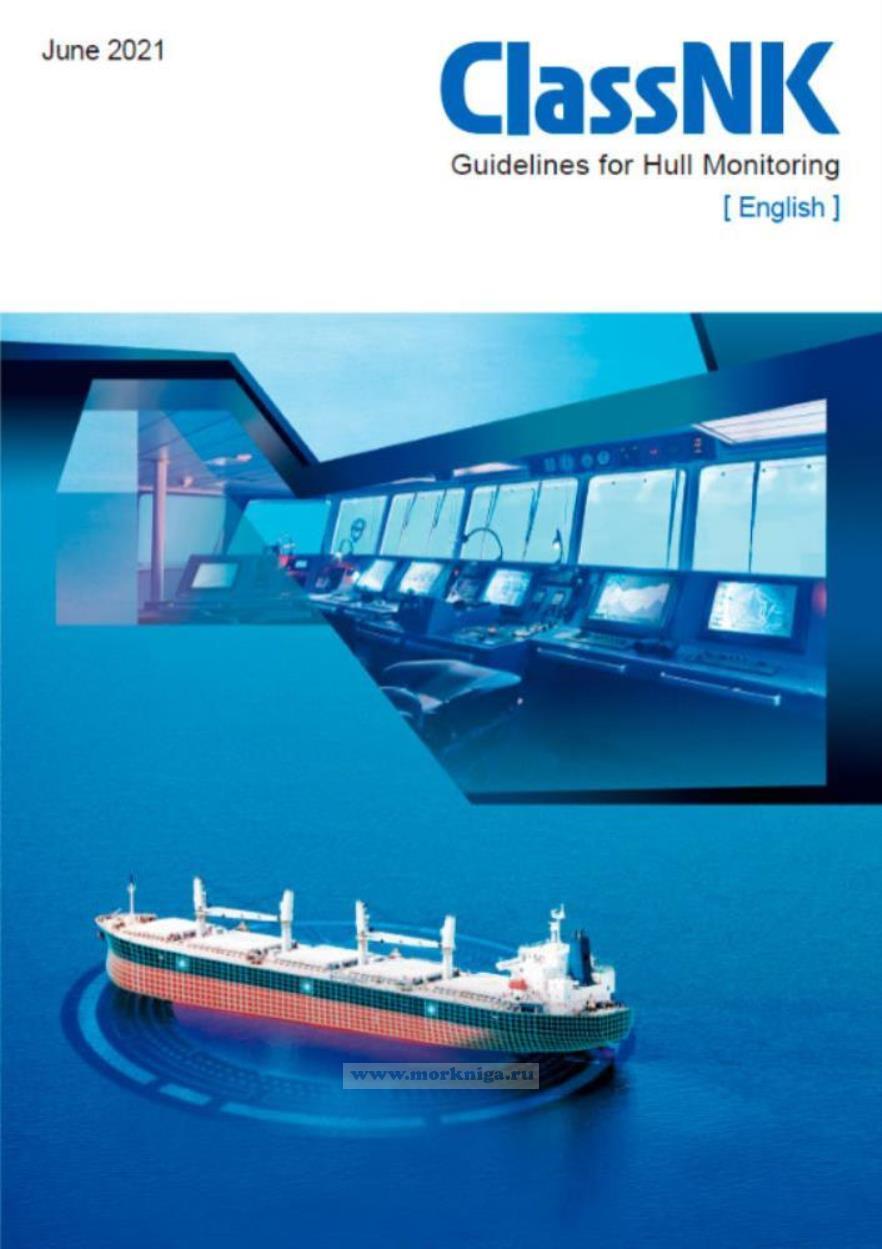Сб с 10 до 16
Guidelines for Hull Monitoring/Руководство по контролю за прочностью корпуса судна
Книга на английском языке.
With the recent improvement of sensing technology, development of communication between ships and shore, and development of technology for big data analysis, efforts to utilize hull monitoring, which is intended to contribute to improving the safety of ships, have been made.
For requirements for hull monitoring, the Rules for Hull Monitoring Systems, which was established by ClassNK in 2002, summarized technical requirements that are based on the latest technology of the time for systems that help captain and crew members to make judgment by displaying a hull response obtained from sensors installed on the ship as specific numerical values.
However, those systems subject to the rules had limited functions, and therefore, the rules did not necessarily address the latest technologies or the industry’s needs.
Contents
1. General
1.1 Purpose
1.2 Application
1.3 Functional Requirements for Hull Monitoring System
1.4 Class Notations
1.5 Termination of Class Notation
1.6 Teams and Definitions
2. Requirements for the Hull Monitoring System
2.1 Requirements for the System
2.1.1 General
2.1.2 Stability of the System
2.1.3 Incoherence of Signals
2.1.4 Functions for Detecting any Anomaly
2.1.5 Time Synchronization
2.1.6 Storage Function
2.1.7 Linkage with a Voyage Data Recorder (VDR)
2.2 Requirements for the System Components
2.2.1 Strain Gauge
2.2.2 Accelerometer
2.2.3 Signal Processor
2.2.4 Data Recorder
2.2.5 Uninterruptible Power System Unit
2.2.6 Wiring
2.2.7 Other
3. Requirements for Installation
3.1 Installation of the System
3.1.1 Installing Sensors
3.1.2 Initial Set-up
3.1.3 Installation Location
3.2 Operation Test
4. Surveys
4.1 General
4.1.1 Kinds of Surveys
4.1.2 Timing of Surveys
4.1.3 Surveys Carried Out in Advance
4.1.4 Preparations of Surveys
4.1.5 Disposition when Repairs are Considered Necessary as a Result of Surveys
4.2 Registration Surveys
4.2.1 General
4.2.2 Submission of Plans and Documents
4.2.3 Simulation Tests
4.2.4 Surveys for Installation and Initial Set-up
4.3 Registration Maintenance Surveys
4.3.1 Annual Surveys
4.3.2 Occasional Surveys
Appendix A
Assistance for the Maintenance of the Ships
A1. Purpose
A2. Class Notations
A3. Target Hull Structural Strength
A3.1 Hull Girder
A3.2 Local Member
A4. Evaluation Method
A4.1 Evaluation of the Measurement Locations
A4.2 Evaluation of Non-Measured Location
A5. Requirements
A5.1 Entire System
A5.1.1 Redundancy of the Hull Monitoring System
A5.2 System Components
A5.2.1 Data Recorder
A5.2.2 Communication to Shore
A6. Surveys
A6.1 Registration Surveys
A6.1.1 Documents
A6.2 Registration Maintenance Surveys
A6.2.1 Annual Surveys
A6.2.2 Occasional Surveys
Appendix B
Assistance for the Ship Operation in Rough Condition
B1. Purpose
B2. Class Notations
B3. Functions for Assistance for the Ship Operation
B3.1 Real-time (onboard)
B3.2 Real-time (onboard + shore)
B3.3 Real-time + Forecast (onboard)
B3.4 Real-time + Forecast (onboard + shore)
B4. Target Hull Structural Strength
B4.1 Strain Gauge
B4.2 Accelerometer
B5. Evaluation Method
B5.1 Real-time
B5.2 Forecast
B6. Requirements
B6.1 Display
B6.2 Communication to Shore
B7. Surveys
B7.1 Registration Surveys
B7.1.1 Documents
B7.2 Registration Maintenance Surveys
B7.2.1 Annual Surveys
B7.2.2 Occasional Surveys

